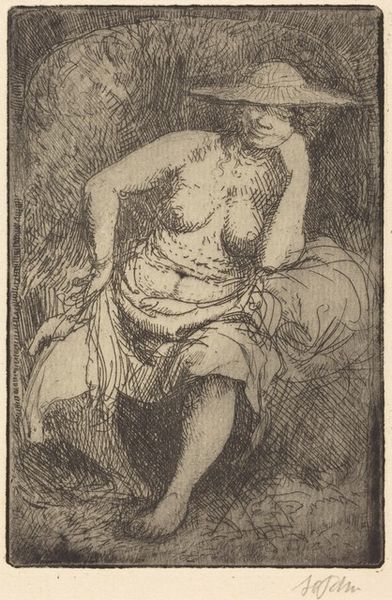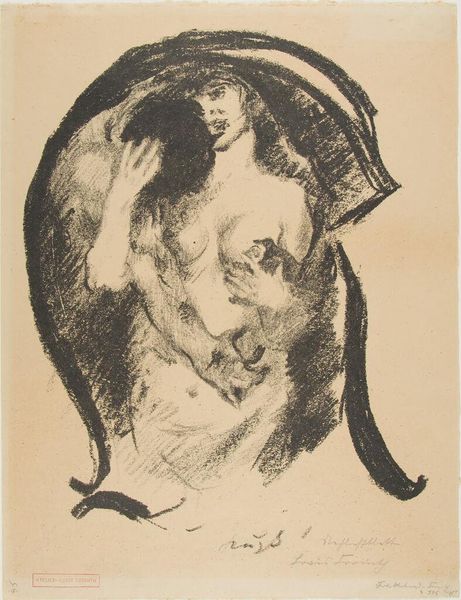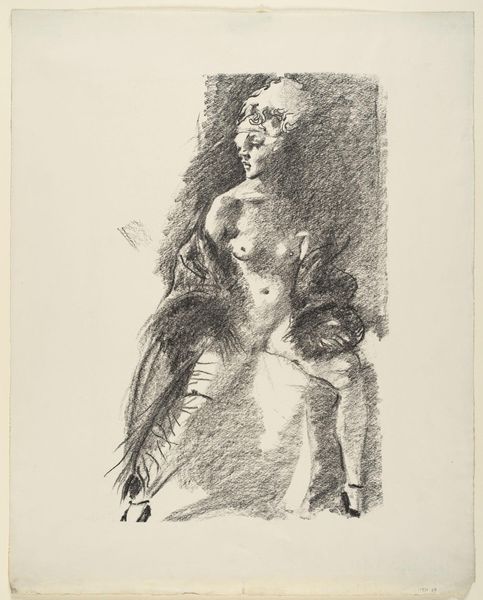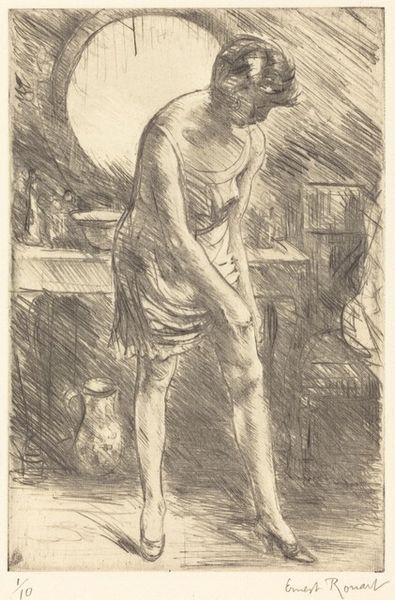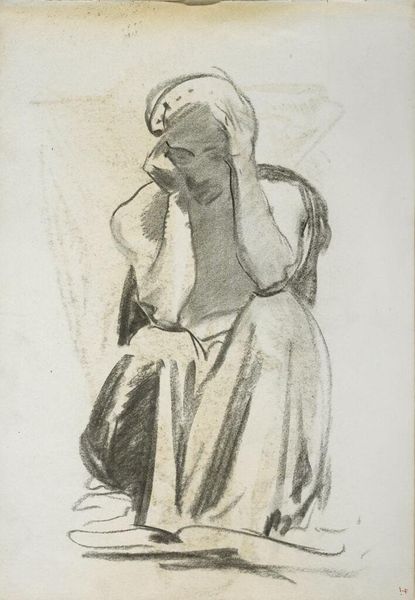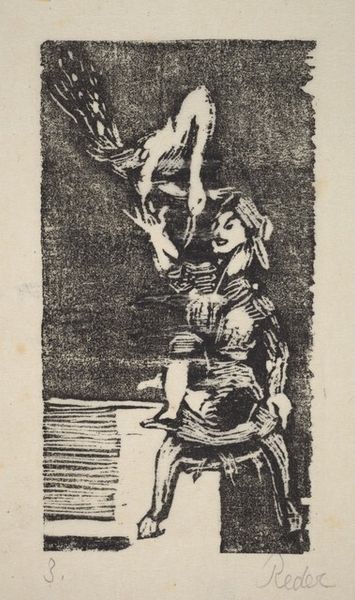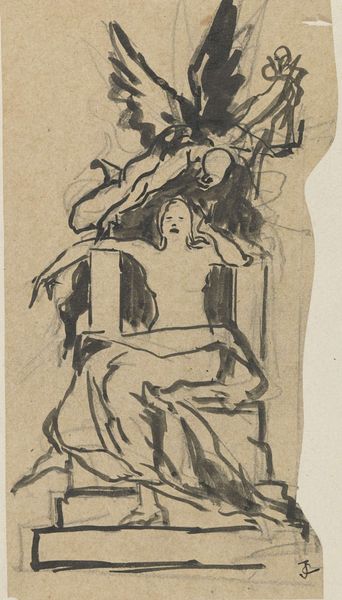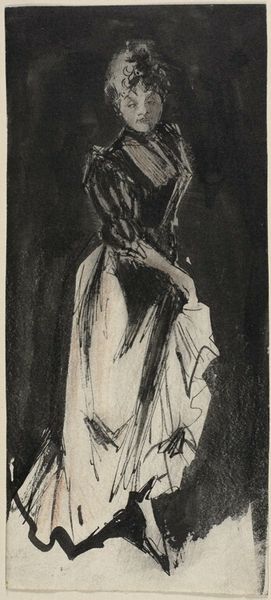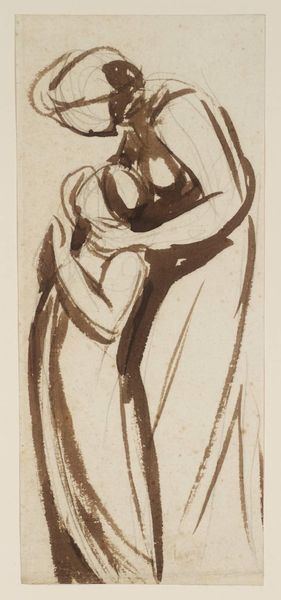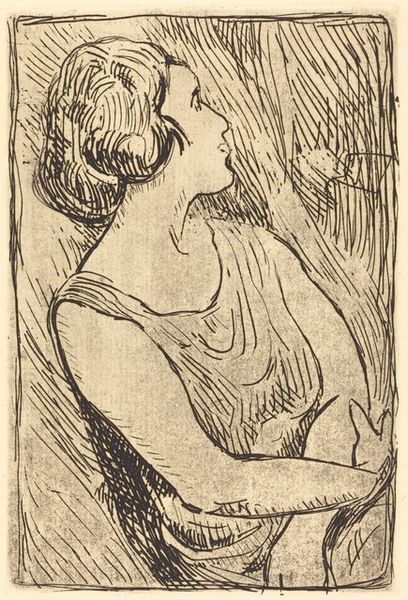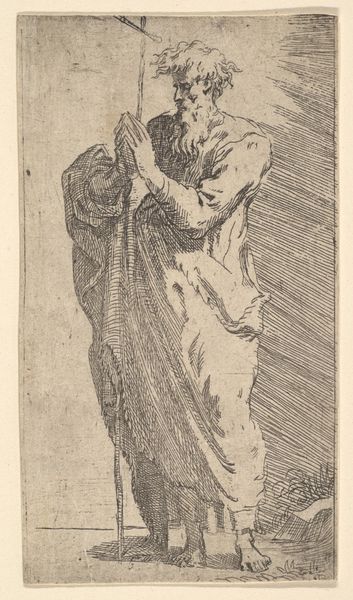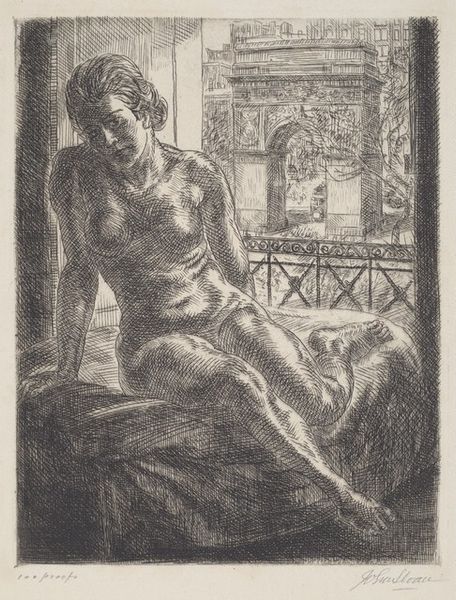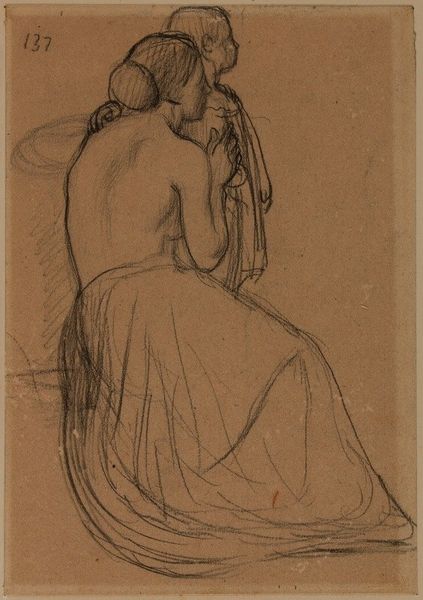
drawing, print, etching, graphite
#
portrait
#
pencil drawn
#
drawing
# print
#
etching
#
pencil sketch
#
figuration
#
pencil drawing
#
graphite
#
genre-painting
#
realism
Dimensions: plate: 252 x 201 mm sheet: 357 x 259 mm
Copyright: National Gallery of Art: CC0 1.0
Editor: This is "Bronx Express," an etching and graphite print by Roselle Hellenberg Osk, from around 1935. It's a simple scene – a woman and child sleeping, presumably on the subway. The sketch-like quality makes it feel so immediate, but there's also a real sense of exhaustion that's conveyed here. How do you interpret this work? Curator: This piece speaks volumes about the social realities of its time. The Great Depression was in full swing. The "Bronx Express" isn't just a subway line; it's a symbol of transit, both literal and metaphorical for those seeking opportunity, often falling short of realizing the "American dream." Osk has captured something profound here. Editor: So, the woman and child might represent a specific struggle? Curator: Exactly. Consider their vulnerability, sleeping in a public space. It subtly critiques the societal structures that force individuals into such circumstances. The soft lines and subdued tones evoke a sense of weariness and resignation. Were these figures white? Are we meant to assume a level of privilege or marginalization based on the lack of direct engagement with race? These silences, these absences, become really important to note. Editor: That's a perspective I hadn't considered. The medium, etching, is interesting. It gives it this fleeting quality. Curator: Yes, like a memory. Osk is prompting us to confront uncomfortable truths about poverty, motherhood, and survival during a very specific moment in history, yet they're unfortunately quite universal experiences, aren't they? Editor: It makes the image more impactful knowing the history behind it. Curator: Indeed. Art holds up a mirror to society, reflecting its complexities and injustices, and this seemingly simple image reveals the cracks in the facade of progress. Editor: I'll definitely look at art differently now, considering these contexts. Curator: That's the power of art: sparking dialogue and challenging our assumptions about the world.
Comments
No comments
Be the first to comment and join the conversation on the ultimate creative platform.
